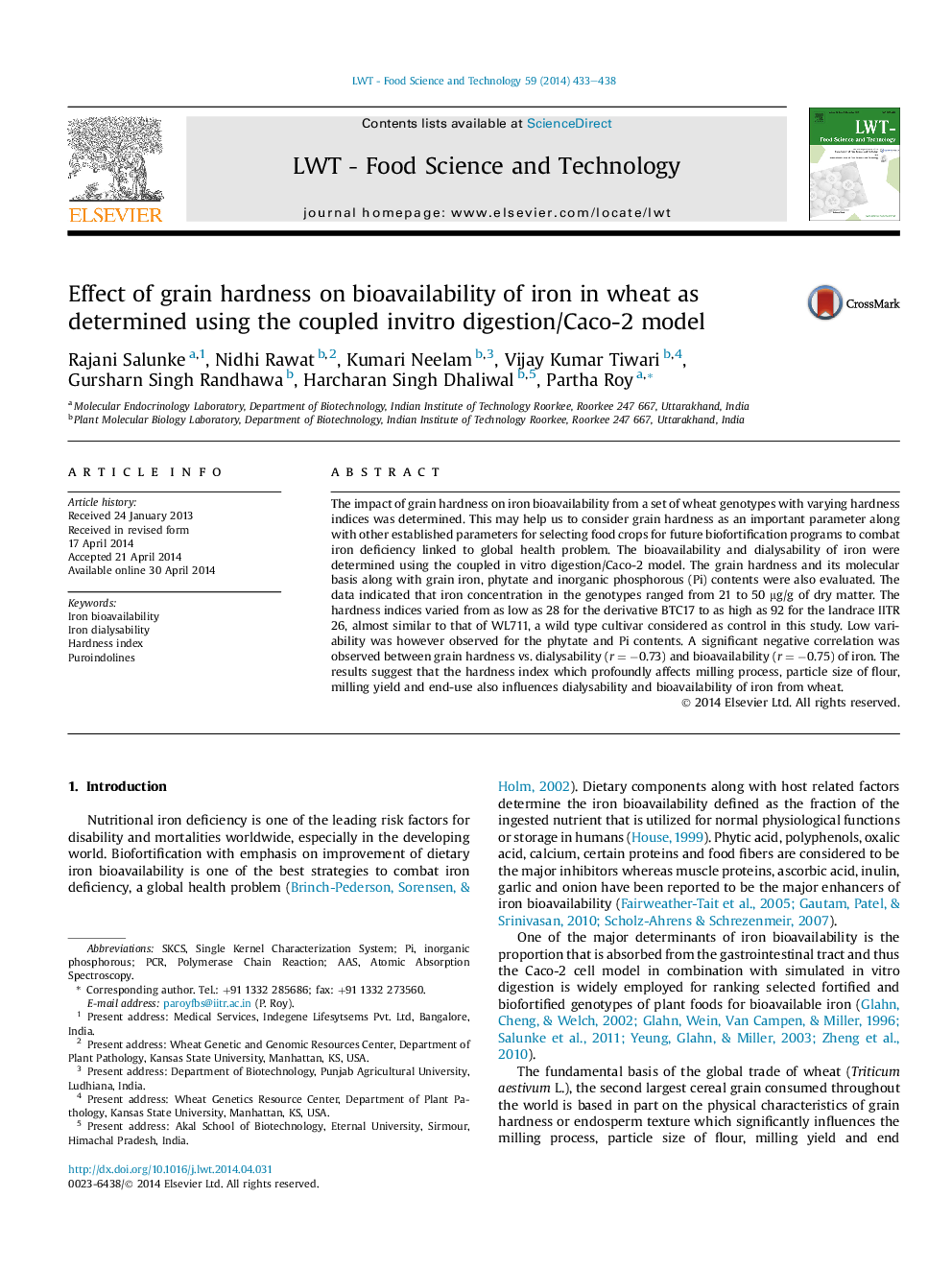| Article ID | Journal | Published Year | Pages | File Type |
|---|---|---|---|---|
| 6403655 | LWT - Food Science and Technology | 2014 | 6 Pages |
â¢Grain hardness correlates negatively with bioavailability of iron from wheat.â¢Hardness index also influences dialysability of iron from wheat.â¢Softer wheat with increased iron content showed enhanced iron bioavailability.â¢HMW glutenin subunit profiles and expression of pin a and pin b genes influence hardness in wheat.
The impact of grain hardness on iron bioavailability from a set of wheat genotypes with varying hardness indices was determined. This may help us to consider grain hardness as an important parameter along with other established parameters for selecting food crops for future biofortification programs to combat iron deficiency linked to global health problem. The bioavailability and dialysability of iron were determined using the coupled in vitro digestion/Caco-2 model. The grain hardness and its molecular basis along with grain iron, phytate and inorganic phosphorous (Pi) contents were also evaluated. The data indicated that iron concentration in the genotypes ranged from 21 to 50 μg/g of dry matter. The hardness indices varied from as low as 28 for the derivative BTC17 to as high as 92 for the landrace IITR 26, almost similar to that of WL711, a wild type cultivar considered as control in this study. Low variability was however observed for the phytate and Pi contents. A significant negative correlation was observed between grain hardness vs. dialysability (r = â0.73) and bioavailability (r = â0.75) of iron. The results suggest that the hardness index which profoundly affects milling process, particle size of flour, milling yield and end-use also influences dialysability and bioavailability of iron from wheat.
